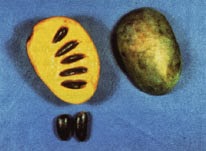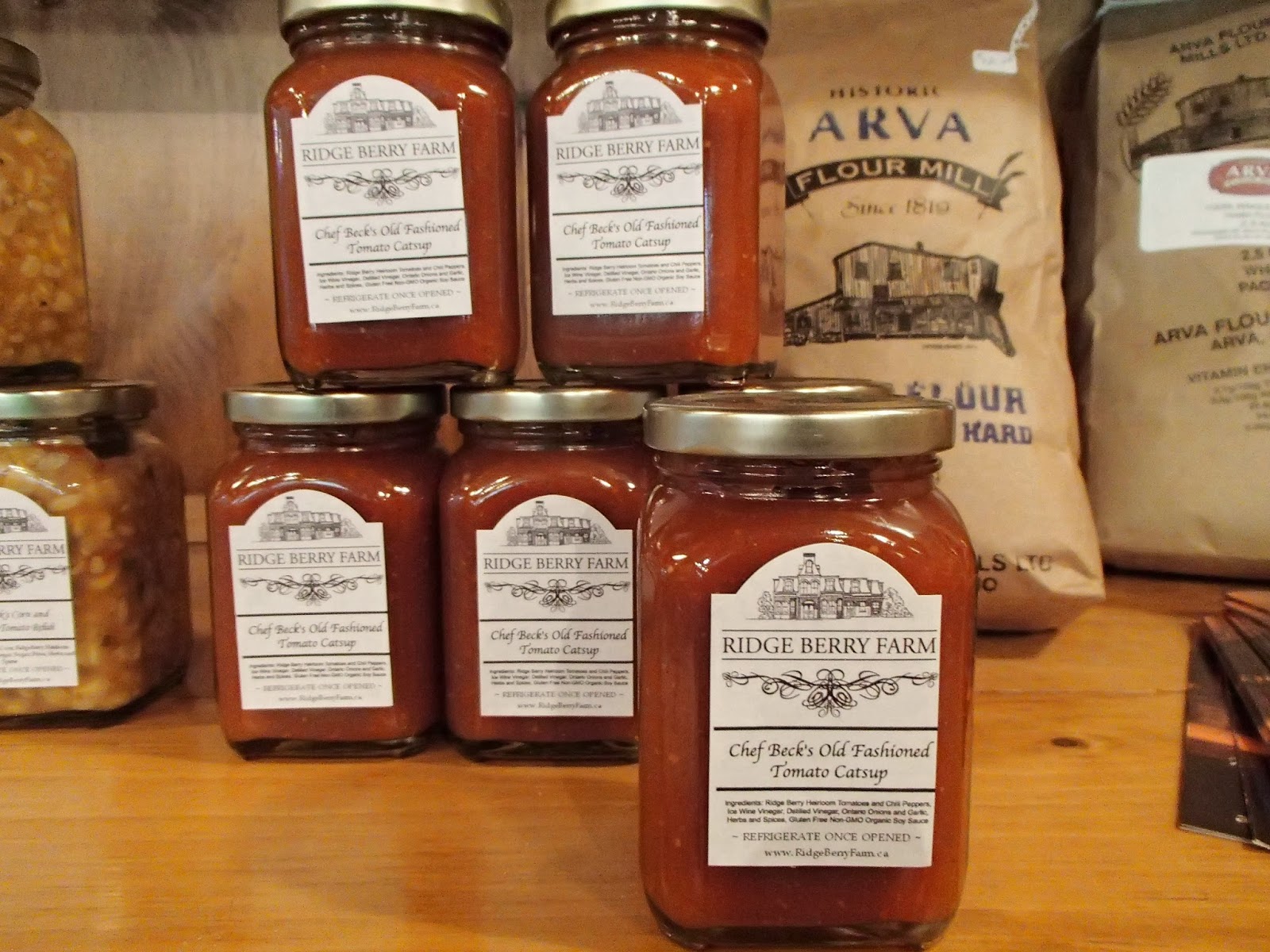This week we planted a Paw Paw patch.
These plants were potted and we have now had them for over two months waiting to be transplanted. Because these were slated for a section close to our Biodome, we had been waiting to finish the construction of our dome and the cleaning up of the site.
 |
| Planting a Paw Paw patch |
I'm not sure where we found out about the Paw Paw. But when we did, we found it intriguing. When we also discovered that a majority of the local folks know nothing about it or have never tasted it, we decided to plant some of these indigenous trees.
Although most folks are not acquainted with the Paw Paw, we were actually told that some wild trees still existed in the region and may be found in certain sites of the Niagara greenbelt.
The Paw Paw is a rather tropical looking plant with a fruit that resembles a Mango. The flesh of the fruit is creamy like that of an Avocado. The fruit also has large black seeds that are easily removed. The fruits were used by Native Americans and settlers alike.
 |
| The Paw Paw fruit |
We hand planted ten trees consisting of three fruit producing varieties....now it's a waiting game. We may have fruit in three years.
On the farming front, we continue to pick the remainder of our Blackberries, but as well our red and golden Raspberries. Although originally planted this Spring as a novelty item, the Golden Raspberry had become one of our favourites. We are now thinking of extending the coverage of this crop next year.
 |
| The Golden Raspberry continues to produce and has become a favourite |
We kept two mature Mulberry trees (for their fruits) and one mature Black Locust (for its edible flowers).
We are not certain of the raspberry variety that was originally planted on this site, but since they have survived in a rather wild state while still producing a small amount of fruit, we will try to preserve a few shoots.
 |
| The original Raspberry plants growing on this site |
 |
| Cleared farm land that now needs serious cleaning |
 |
| A week of burning brush |
Chef has been using these for a soup, our intent was to also plant some of these tubers. Technically, these should be planted some 3 to 4 weeks before last frost, however the tubers do not keep well out of the soil. So we decided to use one of our cleaned raised beds to store them (and perhaps grow them next Spring).
We just planted the tubers 6 inches into the ground.
 |
| Sunchokes (or Jerusalem Artichokes) ready to go into the ground |
In fact, this week he has added an Old Fashioned Tomato Catsup to the line.
 |
| Chef's Old Fashioned Tomato Catsup |
This week, we were surprised to find a bag full of beautiful Quinces at the barn door. We do not know where they came from or rather who dropped them off, but both Chef and I were salivating at the idea of producing Quince jelly.
 |
| From an "unknown benefactor", beautiful Quinces |
I will finish the blog this week with another find. This one was brought in by our friend Carol.
Since becoming an avid blog reader, Carol keeps bringing in wild and strange fruits with the common question: is this edible?
This week it was an odd apple-sized round fruit with a significant amount of "bumps".
 |
| Carol's latest find |
It is actually a drupe. Edible yes....but definitely not tasty.
There is however one good use for this fruit.
In the old days, these were placed beneath the beds as a repellent to spiders and bugs. It turns out that this plant produce a compound which acts as an insect repellent and it is in fact much more effective than Deet!
I have heard of Paw Paw but have never tried one! I hope you will have a bountiful crop in a few years so that maybe you can sell some in your store.
ReplyDeleteI found out about Hedge Apples just last summer! I also hoped they would be edible. Not knowing what else to do with them, I put a few in my shed and basement to keep the spiders away and honestly I really think it helped!
I love your blog! I always learn so much!